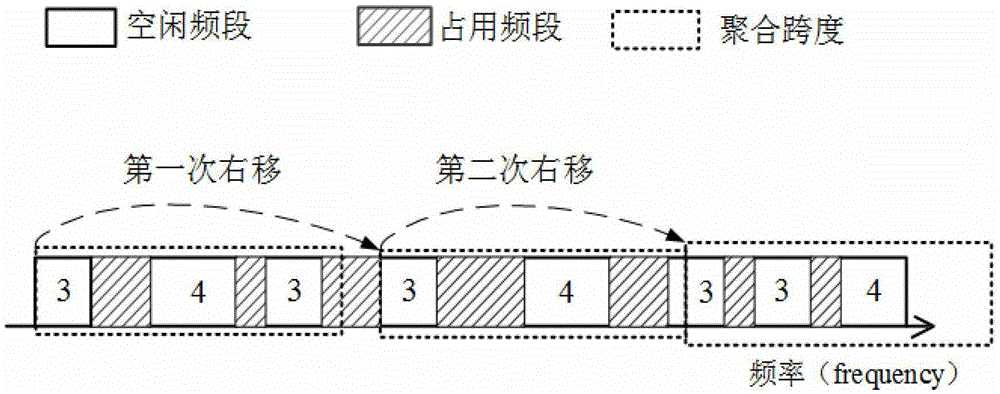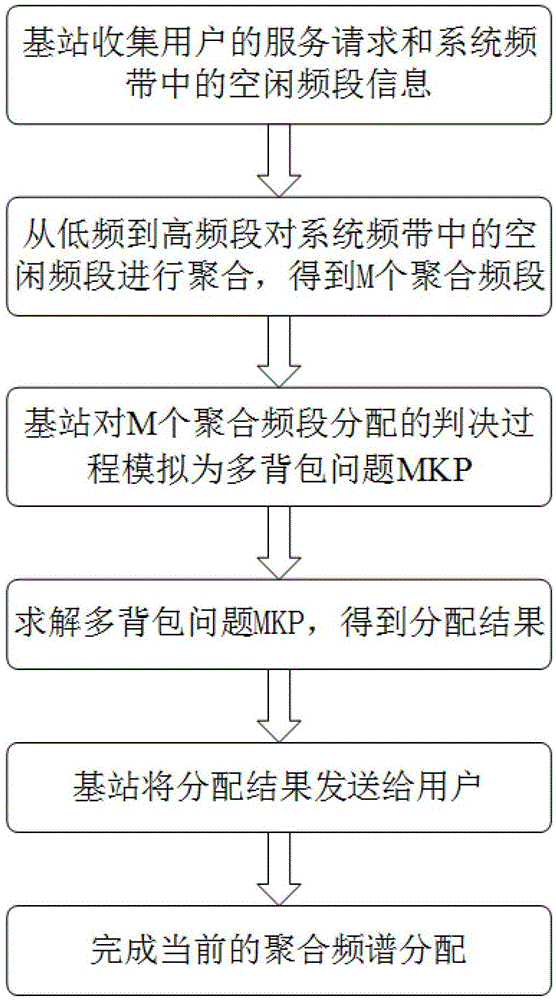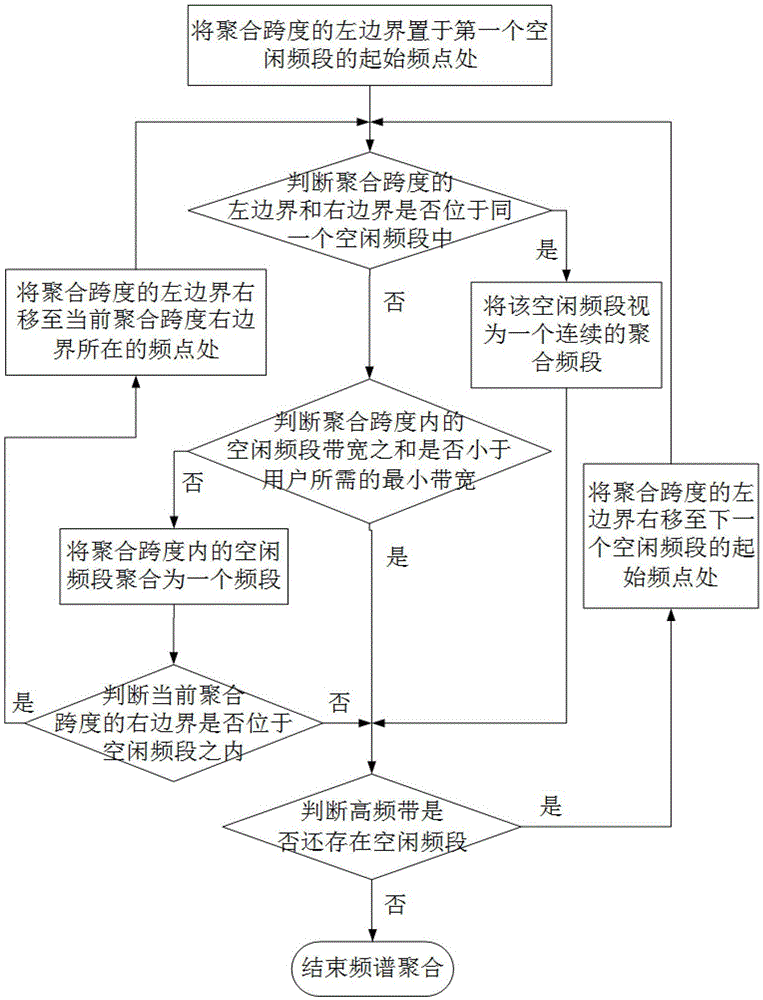Aggregated Spectrum Allocation Method Based on Multiple Knapsack Problem
A technology of aggregating spectrum and allocation method, applied in the field of wireless communication system and spectrum resource allocation, can solve the problems of complex spectrum aggregation and service bandwidth requirements in complex spectrum usage scenarios, and achieve the effect of improving utilization efficiency
- Summary
- Abstract
- Description
- Claims
- Application Information
AI Technical Summary
Problems solved by technology
Method used
Image
Examples
Embodiment Construction
[0031] The technical solutions of the present invention will be described in further detail below with reference to the accompanying drawings.
[0032] refer to figure 1 , the steps of the aggregated spectrum allocation method based on the multi-knapsack problem of the present invention are as follows:
[0033] Step 1, the base station collects the service request information of the user, and obtains the bandwidth set Q={q 1 ,q 2 ,…,q r ,…,q N}, at the same time collect the idle frequency bands in the current system frequency band to obtain a discrete set of idle frequency bands A = ∪ c = 1 H [ f cL , f cU ] ,
[0034] where q r is the bandwidth required by the rth user, r=1,2,...,N-1, N is a natural number not less than 1, ...
PUM
 Login to View More
Login to View More Abstract
Description
Claims
Application Information
 Login to View More
Login to View More - R&D
- Intellectual Property
- Life Sciences
- Materials
- Tech Scout
- Unparalleled Data Quality
- Higher Quality Content
- 60% Fewer Hallucinations
Browse by: Latest US Patents, China's latest patents, Technical Efficacy Thesaurus, Application Domain, Technology Topic, Popular Technical Reports.
© 2025 PatSnap. All rights reserved.Legal|Privacy policy|Modern Slavery Act Transparency Statement|Sitemap|About US| Contact US: help@patsnap.com



